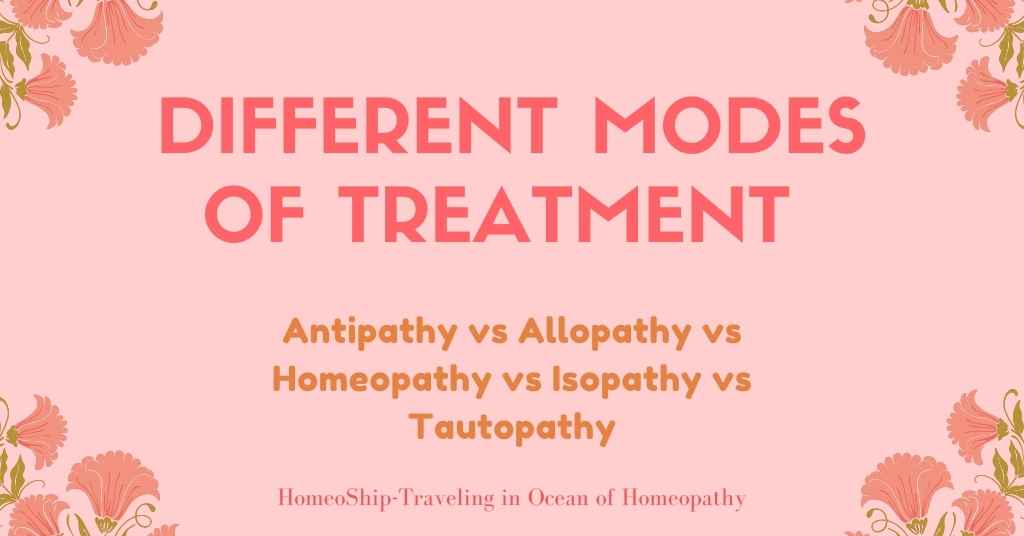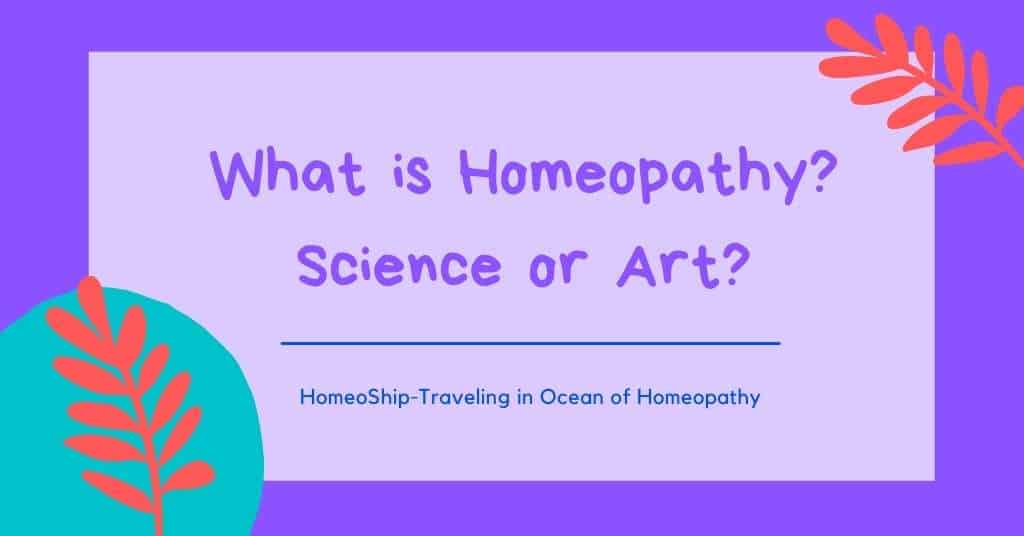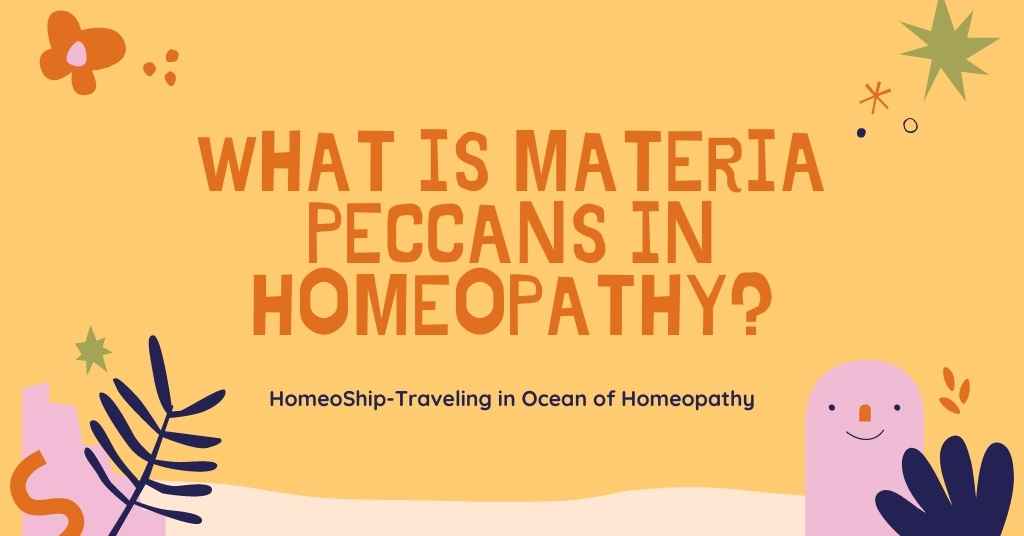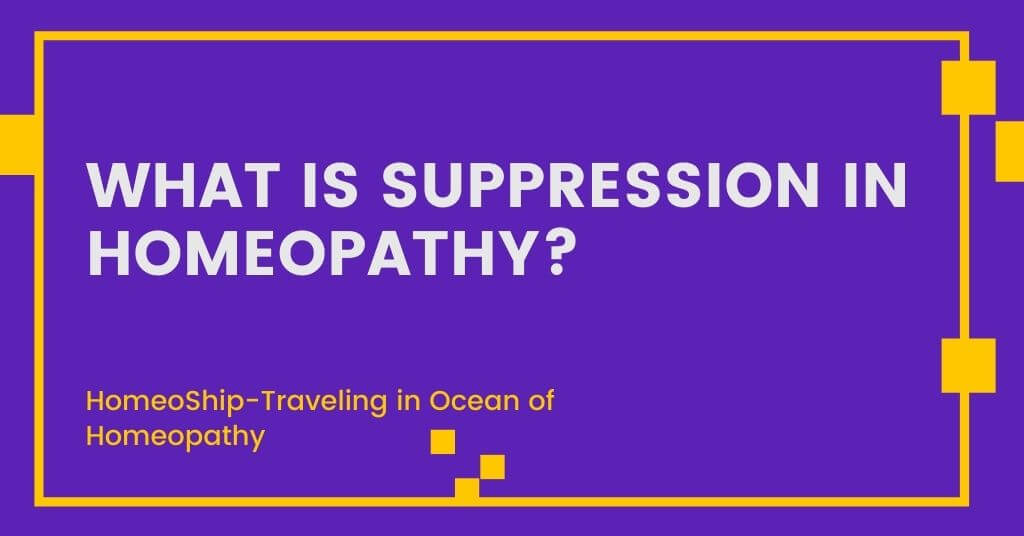Contents
Drugs can only cure the diseases, only if they have the capacity to produce disease symptoms in healthy persons i.e., drugs can cure the diseases only if they possess the capacity to alter the state of health. But administering these medicines is an art.

Hahnemann identified the following methods of treatments as the important ones:
- Antipathy or enantiopathy
- Allopathy
- Homeopathy
- Isopathy
- Tautopathy
Antipathy or Enantiopathy
(§ 22, 23, 56 to 62 and 69)
Antipathy is also known as enantiopathy. The word antipathy is made of two words namely, “anti” means opposite, and “pathos” means suffering. ANTIPATHY = ANTI (OPPOSITE) + PATHOS (SUFFERING) Antipathy is a system of medicine that treats the patient by the administration of drugs that produce exactly opposite symptoms from the suffering symptoms of the patient.
The axiom or law of antipathy is “contraria contrariis curentur”. That means, “opposite cures opposite”. The founder and supporter of this system was Galen.
Historical pieces of evidence say that Hippocrates advocated two systems of medicine. One is the “similia similibus curanter,” i.e. law of similars. The other is “contraria contrariis curentur” i.e. law of dissimilar or antipathy. Hippocrates had the idea that if any natural disease was in a curable condition it had to be treated with the help of the law of similars. But, if the disease was incurable, then the second method of treatment was to be followed.
Antipathy is a palliative treatment, but Galen supported only the antipathic system and the church authority in history made it mandatory. The opposite drug therapy cannot cure the diseases.
Dr. B.K. Sarkar states in his “Hahnemann’s Organon”, “As for instance a hand kept long enough in ice-cold water after having withdrawn does not remain cold, the colder the water of the bath was and the longer it acted on the healthy skin of the hand, the more inflamed and hotter does the latter afterwards become”.
Every time we prescribe the antipathic remedy, initially the disease seems to reduce in intensity but after a short time, it arouses again with more power. So this method is in fact making the patient’s condition still pathetic day by day.
Example:
1. In a case of constipation an antipathic doctor prescribes a remedy that has the capacity to produce diarrhea i.e. opposite condition to the patient’s presenting complaint.
2. In the case of burns, the antipathic treatment is to dip the affected part in cold water.
3. A weak debilitated person is given wine to make him active and energetic.
In the initial stages, it acts perfectly in the desired manner. But what will be the after-effect? Depression and longing for more quantity of wine to get the same stimulation. If the patient starts taking more amount of wine, it has its own effects and produces medicinal disease making the condition of the patient more pathetic.
Advantages of Antipathy
1. In some cases like medicinal emergencies, where there is no time for the dynamic medicines to stimulate the vital force, palliative medicines can save the life of the patient (footnote to § 67).
2. In conditions where ascertaining the symptoms of the patient is difficult like in the case of unconscious patients, palliative medicine for the presenting complaints can be given.
3. In all conditions where instantaneous action is expected to save the life of the patient, the antipathic mode is advocated.
Disadvantages of Antipathy
1. Totality of symptoms is not covered or given importance in this system. Only one or more troublesome presenting complaints is given importance. Hence, it is only a palliative system of medicine and not a curative method. This method ameliorates the symptoms of the patient temporarily. After a short span of relief, the symptoms recur in more intensity. This damages the stamina of the patient further making the case more difficult to cure.
2. Everytime the dose of the medicine has to be increased as the disease recurred with more intensity. This further deranges the life of the patient. Increased doses of the medicines in material doses might produce iatrogenic disease.
3. It is practically impossible to prescribe opposite symptoms for each and every symptom of the patient. So this method cannot be applied universally.
Allopathy or Heteropathy
(Footnote to § 22 and § 54, 55 and 56)
Originally Hahnemann called this system “alleopathy“, in the later years his followers called it as allopathy. The Greek word, allopathy is made up of two words “alloion” means dissimilar or different or heterogeneous, “pathos” means suffering. The name allopathy was first coined by Hahnemann.
ALLOPATHY = ALLOION (DISSIMILAR) + PATHOS (SUFFERING)
Allopathy can be defined as the medical therapy which has no relation between the drug symptoms and the disease symptoms. They employ those drugs which are neither opposite nor similar to the symptoms of the disease, and there is no direct pathological relation between the medicinal action and the disease. They make use of the procedures, which they think most adopted to the given case.
Allopathy uses large, crude doses and external applications of medicines. Allopathy uses compound mixtures which make the disease incurable. In allopathy, the disease is diagnosed by isolating the material substance as the causative factor of the disease.
Example:
1. A man with fever is given purgative, on the basis of the belief that the purgative will remove the toxic substances in the bowels that cause the disease.
2. A person with epileptic attacks was treated with issues (a crude practice of the 17th and 18th-century medicine of letting the blood freely out).
Disadvantages of Allopathy
1. This system uses large doses of medicinal mixtures which are harmful to the patient in long-term usage.
2. It treats disease on the basis of diagnosis and prescribes a specific remedy. Example: specific remedy for typhoid, malaria, cholera, etc. There is no scope for individualization.
3. Medicines are proved on animals and not on healthy humans. So no question of usage of uncommon, peculiar symptoms and subjective symptoms will arise.
4. Allopathy gives importance to the material aspect of the organism and neglects the fact that man has to be studied in the holistic aspect. It has a pathological and materialistic view only.
5. Allopathy has no therapeutic law of its own and no founder. It applies principles of many sciences according to the requirement of the case. Many of the therapeutic practices are derivations of other sciences, like the law of similia and the law of antipathy, etc.
6. This method employs crude mixtures of medicines in large doses for a long period, the chronic disease remains in its place and iatrogenic disease may result.
Allopathic treatment cannot be called the ideal method of cure. Allopathic philosophy keeps changing from time to time just like the kaleidoscope, which changes its colors and designs in each direction, yet the substance remains the same (footnote to § 25).
Merits And Demerits of Antipathy and Allopathy In Comparison of Homeopathy
There are two important methods of treatment: the first one is based on accurate observation, careful experimentation, and pure experience. This system is Homeopathy. The second one is opposite to this can be called Allopathy or heteropathy. Homeopathy and Allopathy cannot be practiced in alternation. They are opposite to each other. The homeopathic system alone can give the highest ideal of cure.
Rational Medicine
Allopathy called itself rational medicine for several centuries. In the name of the systemic medication, allopaths have utilized many improper therapeutic methods. In the name of research, allopaths have studied the human organism from the materialistic point only and neglected the life force.
They could not imagine the fact of the dynamic cause of disease and insisted that materia peccans are the cause of disease. They believed and advocated that cure is possible only by the removal of this materia peccans. With this ideal, they prescribed large doses of crude medicines for centuries.
These large doses of crude substances have damaged the state of the human economy by producing artificial medicinal disease and by suppressing dangerous disease conditions. In the name of hypothetical medicinal advancement, allopaths have employed harmful procedures like setons, venesections, emetics, purgatives, plasters, fontanels, and cauterization. These painful procedures damaged the state of the patient than the disease itself.
Venesections: cutting or section of the vein for bloodletting. Issue: a discharge of pus, blood, or other matter, acting as a counter-irritant, formerly it was considered as a treatment to remove materia peccans. Seton: an artificial surgical procedure to create issues, bypassing an instrument into the subcutaneous tissue.
Hahnemann says a therapeutic system that employs such harmful practices can never be considered a rational system. A system that palliates and suppresses the disease manifestations without doing anything for its cure cannot get the name of rational medicine.
Scientific rationale medicine has to fulfill 3 criteria:
1. It must be based on scientific inductive logic.
2. It must be based on facts.
3. It must be practically proven.
As we can see Homeopathy alone fulfills the above-said criteria, this alone can be called rational medicine. Lets discuss it
Homeopathy

Homeopathy is a rational therapeutic system with the aim of curing the sufferings of a person by administration of drugs that have been experimentally proved on healthy human beings and have the capacity to produce similar sufferings. It is based on the law, “similia similibus curentur” which means ‘let likes be cured by likes’.
The founding father, Dr. Samuel Hahnemann was a German by birth. The meaning of the word homeopathy is “similar suffering”.
HOMEOPATHY = HOMEOS (SIMILAR) + PATHOS (SUFFERING)
Superiority of Homeopathy
1. This system is based on nature’s therapeutic law “similia similibus curanter”, which means “like cures like”. Homeopathy slightly modifies this law and made it harmless. The law of homeopathy is “similia similibus curentur”, which means ‘let likes be cured by likes’.
2. Hahnemann says, “treat the patient and not the disease”. Homeopathy tries to cover the totality of symptoms of the patient and not the single presenting complaint of the patient. It treats the individuals. There are no specific remedies in homeopathy. The aim of homeopathy is to cure the patient and not to palliate his sufferings or to suppress the disease manifestations.
3. Homeopathic medicines are proved and reproved on healthy human beings of all age groups and both sexes. Hence, the action of the medicines are well known to the prescribing physician.
4. Homeopathy covers the totality of symptoms of the patient and not the single symptom. There is no chance for palliation and suppression of the symptoms. Hence, it is the safest system of medicine in the world.
5. Medicinal substances are not administered in the crude form to the patients but in dynamized and minute doses. They are perfectly harmless and there is the chance of developing medicinal or iatrogenic diseases if the law is followed perfectly according to the principles.
6. Homeopathy is based on nature’s law of cure. Nature does not change for anybody and under any circumstances; hence homeopathy has a definite and fixed principle.
7. It is a holistic system of medicine, covering both the physical and mental symptoms of the patient. This is very closer to the biological concept of disease.
8. Homeopathic system of medicine is purely scientific as it is based on an inductive method of logic, exact observation, correct interpretation, rational explanation, and scientific construction is followed.
9. Homeopathy has raised medicinal therapeutics to individual status. It has its own laws and principles. The prescription is not based on any other paramedical subjects or any other sciences. It is only based on two factual observations “the disease is produced by miasms and can be cured only by the similar symptom producing drugs”.
The homeopathic philosophy gives importance to clinical observations. Homeopathy is the only curative method; allopathy and antipathy are the palliatives and suppressive methods that damage the condition of the patient and make the disease incurable.
Isopathy
(Footnote to § 56)
The world Isopathy is made of two words, “iso” means “same” and “pathos” means “suffering”.
ISOPATHY = ISO (SAME) + PATHOS (SUFFERING)
This system is based on the axiom “equalia equalibus curentur” which means “same cures same”. Dr. Wilhelm Lux, a homeopathic veterinary surgeon is considered as the founder of this system. He lived in Leipzig during the years of 1833.
The clear origin of this principle is not known; before Wilhelm Lux Dioscorides, Xenocrates, Galen, Paracelsus, Aegienta, etc. seem to acknowledge this law. Dr.Willium Lux wrote a book called “The Isopathy of contagions”. Isopathy can be defined as a method of treating the disease by the same contagious principle that produces disease. Isopathy is not homeopathy. There is a clear difference between the same and the similia.
Isopathy is only a misunderstanding of the law of similia. Nosodes in homeopathy like influenzinum, psorinum, etc though look like Isopathy, work according to the similia principle. Every nosode in homeopathy has been proved on healthy human beings and clinically checked by homeopaths before introducing them into materia medica. Moreover, the causative agent is potentized or dynamized before proving. Hence, it is in no way the same as the disease but it is similar to it.
Isopathic treatment almost died during the time of Hahnemann itself, because it is not a true curative treatment.
Example:
1. According to isopathic principles, to a person suffering from burns, hot packs will be applied to the affected area.
2. An isopath treats a case of frostbite with the application of snow to the body.
3. A patient with otorrhoea is treated by administration of dilution of his own ear discharge.
4. Old school practitioners give large doses of opium for all types of pains; this will palliate the condition because it produces numbness and temporary relief from pain.
5. Opium, in case of diarrhea palliates the condition, because it stops the peristaltic movements of the intestinal mucosa and makes it senseless.
6. To treat a case of insomnia, an allopath gives opium. It produces stupefied comatose sleep instantaneously but only for a short period. But then the sleeplessness recurs with more intensity.
7. The burnt hand of a patient is kept in cold water as a treatment for instantaneous relief. But the condition worsens after a few hours.
Isopathy is harmful and may lead to dangerous disasters. Homeopathy believes in the administration of medicines based on the totality of symptoms and not on the material cause of the disease.
Palliative practice can only handle one or two chief symptoms, which are more troubling to the patient. This gives instantaneous relief and can never cure the patient. Removal of single or two symptoms of a patient is extremely faulty symptomatic treatment. Removal of the totality of symptoms is the only removal of disease. Nothing else is good for the patient.
Experience shows that after a span of relief in palliation, the disease recurs again but in a more aggravated form. Every drug substance when administered produces certain action on the vital force. This can be termed as the primary action of the drug. To this primary action of the drug, the vital force reacts in the opposite manner.
This reaction of the vital force to the primary action of the drug can be termed as the secondary action. This happens according to nature’s law, “Every action has an equal and opposite reaction”. The secondary action as a rule will be always powerful than the primary action.
Disadvantages of Isopathy
1. The highest ideal of cure is possible only by considering the totality of symptoms and not by administering the same causative material. Initially, Hering and Gross tried to adopt this system in homeopathy with few modifications. But in the later years, this system died during the time of Hahnemann as it could not produce the desired results.
2. Cure in Isopathy is of chance, it is not a reliable and universally applicable method. It is an incomplete system as all diseases cannot be treated effectively.
Let’s reach the last one i.e.
Tautopathy
A leading pharmacist in England called D.W.Everitt has named this system as “Tautopathy”. This approach is said to be based on the “Arndt- Schultz law”.
This law was first introduced by a German psychiatrist and homeopath “Rudolph Arndt” (1835- 1900), and a German pharmacologist and toxicologist “Hugo Paul Friedrich Schultz” (1853-1932) (famous for his “inverted U” dose-response in pharmacology) in separate instances.
Both of them formulated a physiological law “for every substance small doses stimulate, moderate doses inhibit, large doses kill”. Most of the homeopaths believed that the bad effects of the crude drugs can be antidoted by administering the same remedy in dynamized form.
But this belief is wrong. This belief came into existence as there is a pharmacological law in which it is explained that a drug in its small dose will, have the opposite effects than when it is used in its larger dose. These two phases of the same drug action are called the “biphasic response of the drug”.
Graphical representation of Arndt-Schultz law The Arndt -Schultz law is a law to describe the action of the drugs in different doses. This law helps in explaining the homeopathic principles of dilutions. Homeopathy operates in the area where stimulation occurs, whereas allopathy operates in the inhibitory area of dosages. Arndt-Schultz’s law is found in the old pharmacological books of allopathy. It supports the dynamization of drugs and the effects of small doses.
So that’s it, for now, hope you under the differences between the different methods of treatment antipathy, isopathy, tauopathy, allopathy, and the best homeopathy. If you have a doubt then just comment below we will surely look into it!!




I think this is among the most important info for me. And i’m glad reading your article.
But wanna remark on few general things, The web site style
is ideal, the articles is really excellent : D.
Good job, cheers
That is very attention-grabbing, You’re an overly skilled blogger.
I have joined your rss feed and sit up for looking for more of your excellent post.
Also, I have shared your web site in my social
networks
Excellent blog here! Also, your website loads up very fast!
Wow, this article is nice, my younger sister is analyzing these
kinds of things, so I am going to let know her.